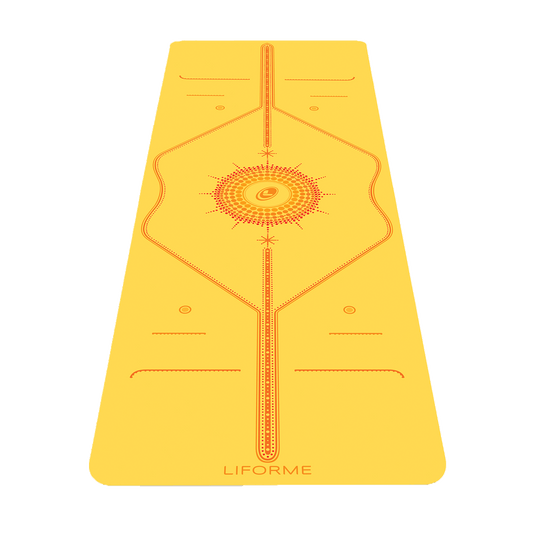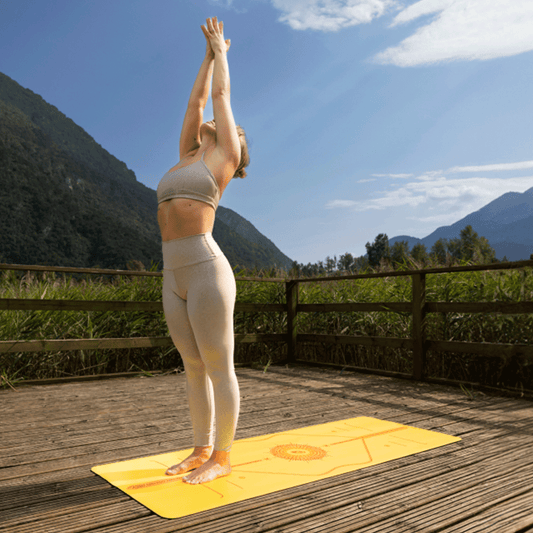Once upon a time, there was this thing called yoga. A few people did it and a lot of people sort of knew about it. Some people felt inexplicably drawn to it and, little by little, more people overcame their fear of the unknown and tried it for themselves. As many more people discovered yoga’s many benefits, the balance shifted a bit. If you weren’t doing yoga, you knew someone (free-spirited Aunt Peggy at first, straight-laced neighbour Jim before long) who was. Yoga moved from the fringes to the mainstream.
Meditation is in the midst of a similar process. A lot of people have definitely heard of it and many people think about trying it but don’t know how. It gets bandied about in popular culture as a byword for wellness and self-care, and while it’s part of that, it’s also so much more. It’s ancient, it’s varied, it’s mystical, it’s adaptable, and it’s still hard for people who haven’t done it to figure out what it's all about. So, we’re going to tell you the basics and explain how you can try it for yourself in the comfort of your very own home.

A Time and Place
First come the logistics: when and where.
You don’t need a lot of time to start meditating. You can begin with just 10 minutes a day. When you carve out that 10 minutes is up to you. First thing in the morning works for a lot of people, but it really can be any time that you can make happen regularly. Once you decide, be consistent to establish the habit.
You need a place that is relatively calm and quiet. It doesn’t have to be an isolated grotto, because most of us don’t have those in our homes, but it’s better not to try it on the subway platform while waiting for a train. Give yourself a chance by minimizing distractions. At home, try to do it when everyone else is out or asleep or you can shut the door. You don’t need candlelight or total silence. Have a chair to sit in and a few small props, like a folded blanket (whose function will be discussed below) handy.
If you like more structure, there is sure to be a meditation class you can attend at your local yoga studio, Zen centre, or even meditation studio if you’re in a bigger city. Meditation apps are also super helpful in guiding you and providing a framework that makes it easier to get started at home.

Coming to Sit
The popular image of someone sitting cross-legged on a cushion with their up-turned palms resting on their thighs and a beatific expression on their face isn’t wrong, but it certainly isn’t the only way to do this thing. In yoga, we’re often told that asana practice makes a classic seated posture more accessible. However, you don’t have to wait for sitting cross-legged to become comfortable (a process of years for some) to give meditation a go.
You can meditate just as well sitting in a chair. Posture is important so you want to sit with both feet flat on the floor, your hands relaxed in your lap and your spine upright. If it’s difficult to sit up straight, try placing a flat cushion or folded blanket under your bum to tilt your pelvis forward a little bit, which helps create a comfortable, supported position for the spine. If you prefer the floor, you can certainly sit on a yoga mat, perhaps with a block or bolster under your bum for extra support. Don’t overthink it, since you can always make adjustments the next time. Just take a seat.

Closing Your Eyes
There are types of meditation when you keep the eyes open, either softly focused or intent upon one object, but closing your eyes is an immediate removal of stimulus that signals your brain that it’s time to turn inwards. We get so much distracting visual input through our eyes that it’s nice to just turn that channel off and take it out of the equation.
Ok, you’re sitting still with your eyes closed. That’s what meditation looks like, right? So, what happens next?!

Anchor Your Awareness
There are many different ways to meditate. There are techniques involving the repetition of mantras and visualisations, but one of the most common ways to start is to anchor your awareness to your breath. What does that mean?
It means that you begin to focus your attention on your inhalations and exhalations, both through the nose if possible. You don’t change the way you breathe, you just put some effort into noticing it. You can feel the sensation of air moving over your upper lip, the way your chest rises and falls as the lungs fill and empty, whatever works for you.
Using the breath as a point of focus keeps your attention in the present moment. Stress and anxiety are rooted in worrying about the future and obsessing about the past. The present is a safe zone.
Does this mean that when you focus on your breath you immediately stop thinking? No! Thoughts will continue to come up over and over just like they always do. You’ll be slowly training yourself to not engage with your thoughts during this designated meditation time. This is difficult at first (and maybe even at last), but that’s actually the practice. When you find yourself lost in a train of thought, let it go and bring your attention back to your breath, which is always with you and always available.
People think that when you meditate you are doing nothing and that seems boring, but you are actually constantly doing something. You are choosing to focus on your breath rather than your thoughts again and again. Even if you sometimes succumb to your irresistible thoughts, you are not failing at meditation. You are in process. Soon you will realize what you are doing, release the thought, and return to the breath.
Eventually, you may find that you are able to observe your thoughts as if you are looking in on them from the outside. This gives the 'observing you' some perspective on the 'thinking you'. It reveals that your thoughts are not the sum total of yourself, that you can have some measure of control over them. It may allow you to stop yourself from going to that doomsday place where everything goes wrong.
If you are a yoga practitioner, then you know the value of consistent practice over time. It’s the same with meditation. It’s not something to do just when you feel stressed. Training the mind and giving it that little break from its hamster wheel of frenetic activity actually helps prevent stress and anxiety from taking hold.

Why Bother?
The benefits of regular meditation are numerous and include reduced stress and anxiety, better focus, better sleep, and an improved sense of well-being. While scientific research on meditation is still catching up with its popularity, there are thousands of years of experiential evidence that suggest it helps many people live happier and more productive lives. Conduct your own experiment and see if meditation helps you get a little much-needed headspace.




































